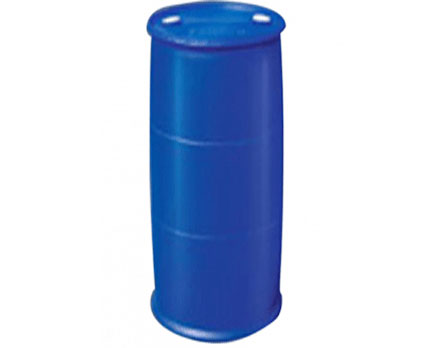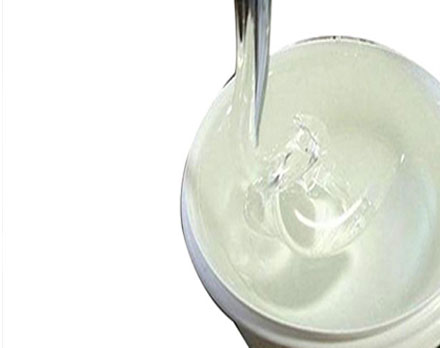What's the Difference between Sugar and Functional Sugar?
What is sugar?
Sugar (carbohydrates) are polyhydroxyl (2 or more) aldehyde or ketone compounds, or organic compounds that can become one of the two after hydrolysis. Carbohydrates are polyhydroxy aldehydes or ketones, which can be divided into aldoses and ketoses. Sugars can also be classified into trioses, tetroses, pentoses, and hexoses according to the number of carbon atoms. The simplest sugar is triose (glyceraldehyde and dihydroxyacetone). Since most sugar compounds can be represented by the general formula Cn(H2O)n, people have always thought that sugars are compounds of carbon and water, thus sugar is also called carbohydrates.
Carbohydrates are the main substances in the human body that provide calories and energy. Each gram of glucose is oxidized in the human body to produce 4 kcal of energy, and about 70% of the energy required by the human body is provided by sugar. In addition, sugar is also an important substance that constitutes tissues and protects liver functions.
What is functional sugar?
From a purely chemical point of view, functional sugars actually refer to functional oligosaccharides, functional dietary fibers, functional sugar alcohols and other substances with special physiological effects.
Among them, functional oligosaccharides belong to oligosaccharides, mainly including stachyose, raffinose, isomaltulose powder, lactulose, fructooligosaccharides, xyloligosaccharides, galacto-oligosaccharides, isomalt-oligosaccharides, isomaltoketose oligosaccharides, gentio-oligosaccharides, soybean oligosaccharides, chitosan oligosaccharides, etc. Since there is no enzyme system in the human intestine to hydrolyze them (except for isomaltulose), they are not digested and absorbed directly into the large intestine. This feature allows them to be used preferentially by bifidobacteria and is a proliferation factor for bifidobacteria.
Functional dietary fiber is a high-molecular carbohydrate. Since it cannot be digested and absorbed by the human body, it has no nutritional value. However, because it cannot be digested, it can slow down digestion and excrete cholesterol as quickly as possible, keep blood sugar and cholesterol in the blood at an optimal level, and help diabetic patients reduce insulin and triglycerides.
Functional sugar alcohols mainly include sorbitol, maltitol (maltitol powder/maltitol liquid), xylitol, erythritol, and isomalt. In the case of a significant increase in type 2 diabetes, substitutes for ordinary sugar, sugar alcohols, are being used more and more. Because sugar alcohols do not cause a significant increase in insulin in the body, they are added to many foods that require sweetness but must be sugar-free. The properties of sugar alcohols, such as prebiotics, low energy, low blood sugar, and insulin response properties, are of positive significance for improving the health and quality of food and preventing the occurrence and development of chronic diseases.
-
Inulin
-
Polydextrose
-
Resistant Dextrin
- Trehalose
- Resistant Dextrin(Soluble Corn Fiber)
- Resistant Dextrin(Soluble Corn Fiber)(Powder)
- Resistant Dextrin(Soluble Tapioca Fiber)(Powder)
- Resistant Dextrin(Soluble Tapioca Fiber)(Liquid)
- Resistant Maltodextrin Powder
- Resistant Maltodextrin Powder (Liquid)
- Organic Resistant Dextrin Powder (Corn Type) 70%
- Organic Resistant Dextrin Powder (Corn Type) 90%
- Organic Resistant Dextrin Powder (Tapioca Type) 70%
- Organic Resistant Dextrin Powder (Tapioca Type) 90%
- Organic Resistant Dextrin Syrup (Corn Type) 70%
- Organic Resistant Dextrin Syrup (Corn Type) 90%
- Organic Resistant Dextrin Syrup (Tapioca Type) 70%
- Organic Resistant Dextrin Syrup (Tapioca Type) 90%
- Organic Resistant Maltodextrin Powder (Corn Type) 70%
- Organic Resistant Maltodextrin Powder (Tapioca Type) 70%
- Organic Resistant Maltodextrin Syrup (Corn Type) 70%
- Organic Resistant Maltodextrin Syrup (Tapioca Type) 70%
- Organic Soluble Corn Fiber Powder 70%
- Organic Soluble Corn Fiber Powder 90%
- Organic Soluble Corn Fiber Syrup 70%
- Organic Soluble Corn Fiber Syrup 90%
- Organic Soluble Tapioca Fiber Powder 70%
- Organic Soluble Tapioca Fiber Powder 90%
- Organic Soluble Tapioca Fiber Syrup 70%
- Organic Soluble Tapioca Fiber Syrup 90%
- Resistant Dextrin Powder (Corn Type) 70%
- Resistant Dextrin Powder (Corn Type) 90%
- Resistant Dextrin Powder (Tapioca Type) 70%
- Resistant Dextrin Powder (Tapioca Type) 90%
- Resistant Dextrin Syrup (Corn Type) 70%
- Resistant Dextrin Syrup (Corn Type) 90%
- Resistant Dextrin Syrup (Tapioca Type) 70%
- Resistant Dextrin Syrup (Tapioca Type) 90%
- Resistant Maltodextrin Powder (Corn Type) 90%
- Resistant Maltodextrin Powder (Tapioca Type) 90%
- Resistant Maltodextrin Syrup (Corn Type) 90%
- Resistant Maltodextrin Syrup (Tapioca Type) 90%
- Soluble Corn Fiber Powder 70%
- Soluble Corn Fiber Powder 90%
- Soluble Corn Fiber Syrup 70%
- Soluble Corn Fiber Syrup 90%
- Soluble Tapioca Fiber Powder 70%
- Soluble Tapioca Fiber Powder 90%
- Soluble Tapioca Fiber Syrup 70%
- Soluble Tapioca Fiber Syrup 90%
-
Dioscorea Opposita Dietary Fiber
-
Wheat Dietary Fiber
-
Oat Dietary Fiber
-
Polydextrose Powder (Conventional Type)
-
Polydextrose Powder (Special Type)
-
Polydextrose Powder (Sugar Free Type)
-
Polydextrose Powder (Type II)
-
Polydextrose Powder (Type III)
-
Polydextrose Syrup (Conventional Type)
-
Polydextrose Syrup (Refined Type)
-
Polydextrose Syrup (Special Type)
-
Polydextrose Syrup (Standard Type)
-
Polydextrose Syrup (Sugar Free Type)
- Fructo Oligosaccharide
-
Malt Oligosaccharide
- Isomalto-oligosaccharide 900 Powder
- Isomalto-oligosaccharide 900 Powder(Corn)
- Isomalto-oligosaccharide 900 Powder(Tapioca)
- Isomalto-oligosaccharide 900 Syrup
- Isomalto-oligosaccharide 900 Syrup(Tapioca)
- Isomalto-oligosaccharide 900 Liquid (Corn)
- Isomalto-oligosaccharide 900 Liquid (DP3)
- Isomalto-oligosaccharide 900 Liquid (Tapioca)
- Isomalto-oligosaccharide 900 Powder (Corn)
- Isomalto-oligosaccharide 900 Powder (DP3)
- Isomalto-oligosaccharide 900 Powder (Tapioca)
- Organic Isomalto-oligosaccharide 900 Liquid (Corn)
- Organic Isomalto-oligosaccharide 900 Liquid (DP3)
- Organic Isomalto-oligosaccharide 900 Liquid (Tapioca)
- Organic Isomalto-oligosaccharide 900 Powder (Corn)
- Organic Isomalto-oligosaccharide 900 Powder (DP3)
- Organic Isomalto-oligosaccharide 900 Powder (Tapioca)
- Xylo-oligosaccharide
- Galacto-oligosaccharide
-
Mannan Oligosaccharide
-
Isomaltulose Powder
-
Saigao Stachyose






